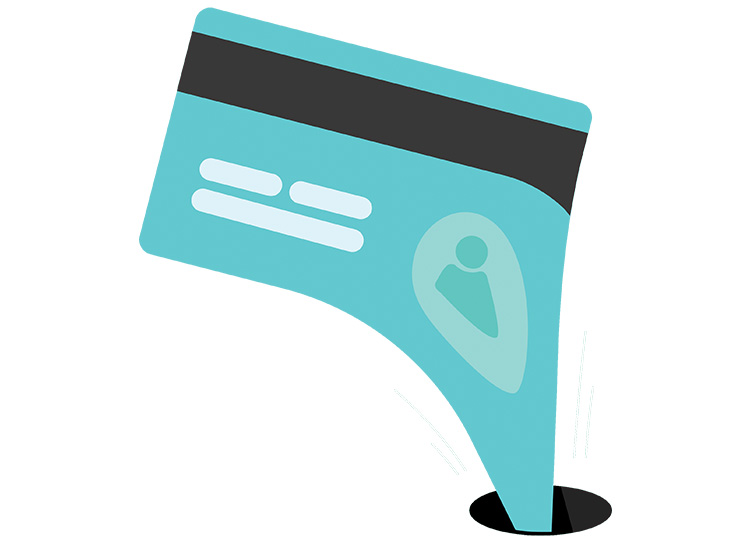Take Five to prevent Card ID theft
The amount of money stolen through card ID theft almost doubled last year compared with 2021, reaching a total of £51.7 million. Here we learn how the UK Finance’s Take Five to Stop Fraud Campaign is tackling this crime.
What is card ID theft?
Card ID theft occurs when a criminal uses a fraudulently obtained bank card or card details, along with stolen personal information, to open or take over a card account held in someone else’s name. There were more than 82,000 cases last year: the highest ever recorded for this type of fraud. There are two categories of card ID theft: third-party application fraud and account takeover fraud.
With third-party application fraud, a criminal will use stolen or fake documents to open a card account in someone else’s name. In an account takeover fraud, a criminal takes over another person’s genuine card account.
Stealing personal information
Information is a valuable commodity for criminals. Criminals need to compromise significant amounts of customers’ personal information to commit both types of card ID theft. They do this using methods such as phishing emails and scam texts to trick people into divulging their data. Criminals will also try to steal mail from external mailboxes and multi-occupancy buildings, hoping to find personal and financial information in letters and other correspondence. This is alongside other forms of data loss, such as via data hacks.
Armed with this stolen information, the criminal then tries to target a customer’s existing accounts or apply for credit cards by impersonating the victim.
Fraudsters’ focussed efforts on stealing such information is believed to be behind the increase in card ID theft over the last year.
Tackling card ID theft
The banking and finance sector is at the forefront of efforts to tackle fraud, including card ID theft, and protect customers. The sector spends billions on detection and prevention and works closely with government and law enforcement to disrupt this criminal activity and bring fraudsters to justice.
Helping everyone spot the signs of a scam and protect themselves from financial fraud is also vital and UK Finance’s Take Five to Stop Fraud campaign offers straightforward and impartial advice.
Take Five to avoid card ID theft
To stay safe from card ID theft, Take Five advises people to:
Use a redirection service when moving to a new home, such as the one provided by the Royal Mail, as well as informing your bank, card company and other organisations you have accounts with your new address.
Be careful if other people have access to your post. Contact Royal Mail if you think your post is being stolen.
Destroy unwanted documents including bills, bank statements or post that’s in your name, preferably by using a shredder.
Request copies of your personal credit report from a credit reference agency on a regular basis to check for any entries you don’t recognise.
Provide as little personal information about yourself on social media as possible and only accept invitations from people you know.
You can apply to be on the Cifas Protective Registration Service for a fee, which places a flag next to your name and personal details in their secure National Fraud Database. Companies and organisations who have signed up as members of the database can see you’re at risk and take extra steps to protect you, preventing criminals from using your details to apply for products or services.
Cancel any lost or stolen credit or debit cards immediately
Keep your personal information secure when using your card over the phone, on the internet, or in shops by ensuring that others can’t overhear you or see your information.
If your passport, driving licence, cards or other personal information have been lost or stolen, immediately contact the organisation that issued it.
Always remember that criminals are experts at impersonating people, organisations and the police. They spend hours researching you for their scams, hoping you’ll let your guard down for just a moment. Stop and think. It could protect you and your money.
For more information on how to stay safe from fraud and scams visit the Take Five to Stop Fraud website.


